The main center of Ukrainian resistance in besieged Mariupol is the Azovstal metallurgical plant. There are about a thousand civilians and military. Russians are bombing and trying to storm the area every day.
On the morning of April 19, the Russian Ministry of Defense once again offered the Ukrainian military to leave Azovstal and surrender. On the same day, DPR proxies announced the beginning of the assault on the plant.
In recent weeks, Russian aircraft have been mercilessly bombing the plant, and the Ukrainian Armed Forces and Azov National Guard have declared a critical situation and asked for international assistance to civilians and wounded from Azovstal. BBC News Ukraine explains how this metallurgical giant actually became the last fortress of Ukrainian Mariupol.
The last bastion
From the first days of the February 24 invasion, the Russian military and DNR militants were trying to capture Mariupol. This city with a population of almost half a million is not only an important port on the Sea of Azov. In May-June 2014, during the anti-terrorist operation, the military of the Armed Forces and volunteer battalions were able to recapture the city. Since then, despite the shelling of residential neighborhoods in January 2015, Mariupol has lived a peaceful life and developed rapidly. The presence of two metallurgical giants and one machine-building giant in the city contributed to this.
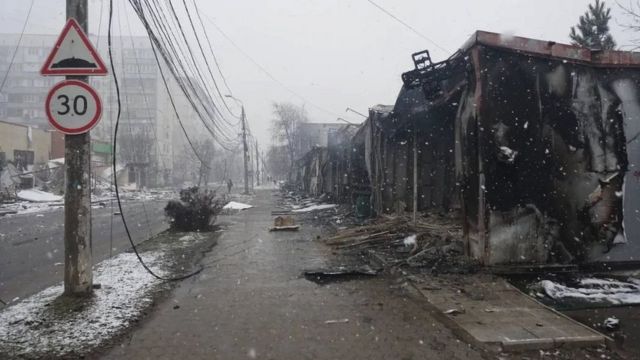
Already in early March, the Russians managed to surround Mariupol on all sides and block from the sea. The city was defended by Azov regiment, the 36th Marine Brigade, as well as border guards, police and members of the Security Service of Ukraine. By storming the settlement, the Russian military and DNR militants were able to oust Ukrainians from almost all centers of resistance by mid-April, including the seaport and the Ilyich plant. At the same time, the Kremlin is conducting offensive actions with the most destructive effect. According to the Ukrainian authorities, about 90% of the city was destroyed by shelling and bombing, and about 20,000 civilians were killed.
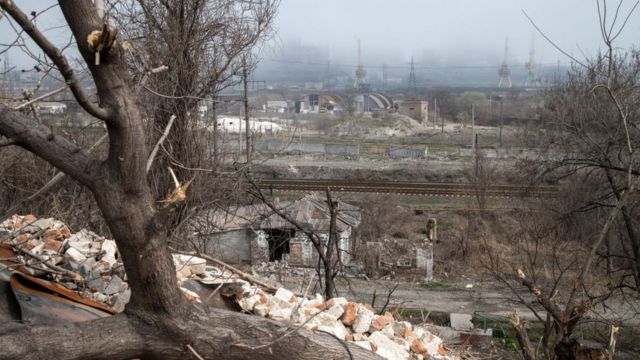
In mid-April, it became known that some Ukrainian Marines were able to break through the encirclement at the Ilyich plant in the north of the city and join the Azov forces in the south in Azovstal.
“Defenders of the city have now together seriously strengthened their defense area. In general, the city’s defense system has grown and strengthened,” said Oleksiy Arestovych, an adviser to the head of the Ukrainian president’s office.
Russia’s Defense Ministry, in turn, said that most of the Marine brigade – about one thousand people – surrendered. Brigade commander Volodymyr Baranyuk was allegedly killed during a breakout from the encirclement. On the Ukrainian side, Oleksiy Arestovych, an adviser to the head of the office, commented on this, acknowledging the fact of captivity, but saying that the number of prisoners was “much smaller.”
Thus, Russia focused all its efforts on the destruction of the last citadel of Ukrainians in Mariupol – the Azovstal plant. It is bombed daily.
“They (Russians – Ed.) Use free-fall bombs, missiles, bunker bombs, all kinds of artillery, both ground and sea, for indiscriminate attacks,” said Azov commander Denis Prokopenko.
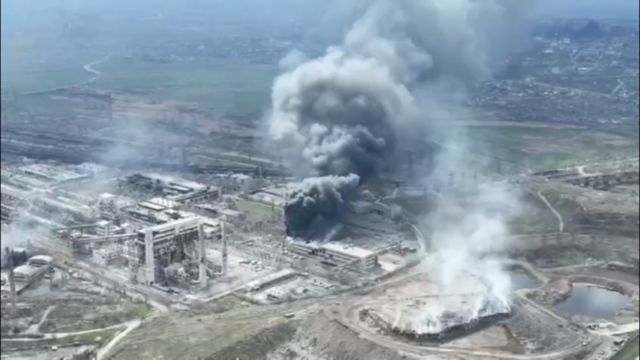

What is Azovstal?
Azovstal is a metallurgical giant with almost 100 years of history and a vast territory on the left bank of the Kalmius River. The territory of the plant is sandwiched between the river on the one hand and the shores of the Sea of Azov on the other. The plant has its own cargo port and an extensive system of underground communications.
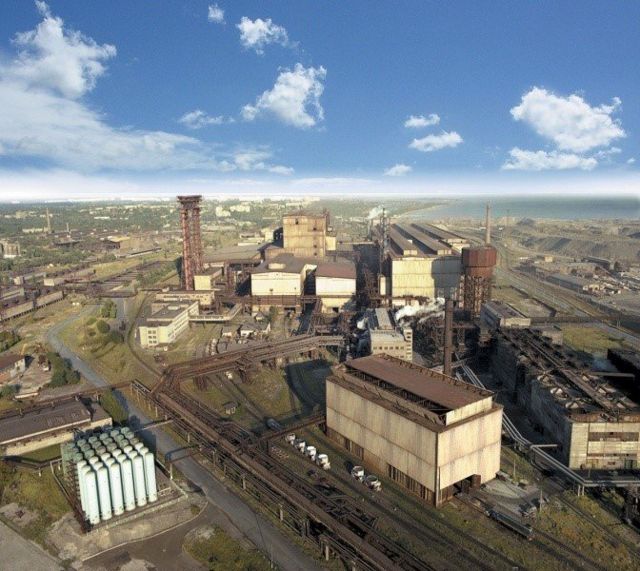
The decision to build the enterprise was made in 1930 by the Presidium of the Supreme Soviet of the National Economy of the USSR. Favorable geographical location allowed the use of sea transport to supply the iron ore plant. In 1931 the construction of the first factory buildings and the seaport began. The first batch of cast iron at Azovstal was received in two years.
In the autumn of 1941, due to the approach of the front line to the city, many technological units of the plant were evacuated to the Urals. German troops captured Mariupol on October 8, 1941, and in September 1943 almost destroyed the plant before retreating. Major facilities, including coke batteries, blast furnaces and open-hearth furnaces, were blown up.
Production at the plant resumed in 1945. The plant was actively developed and became one of the leaders in Europe in the manufacture of metallurgical products. In 2006, Azovstal joined the Metinvest group of Ukrainian businessman Rinat Akhmetov. Before the Russian invasion, about 10,000 people worked at the plant, but now it has been stopped.
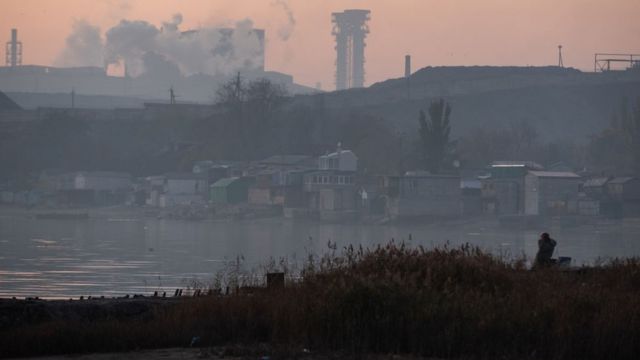
The total area of the plant is about 11 square kilometers.
The shelling of the plant began in mid-March. The Russians said that there may be biochemical laboratories on the territory of the enterprise. Azovstal CEO Enver Tskitishvili calls it nonsense.
“All our enterprises in Mariupol were shut down in the first week of Russia’s invasion of Ukraine. Chemical reagents used by metallurgists in the production process were destroyed on February 25, as evidenced by all the necessary documents … Azovstal has no secret tunnels with biochemical laboratories. “, – he declared. The head of the plant believes that it will work again after the war.
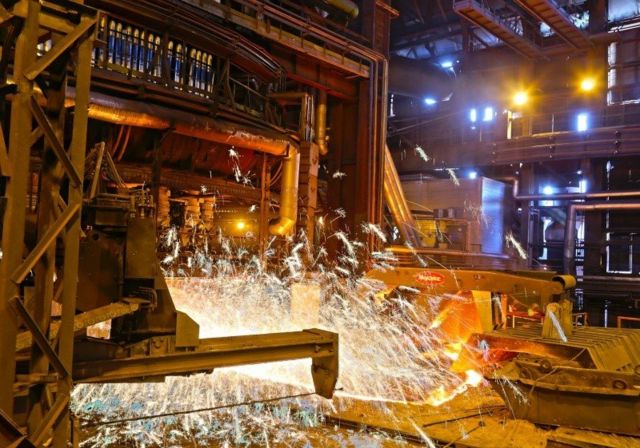
Its territory was chosen to shelter by the Ukrainian military and hundreds of civilians. The fact is that Azovstal has a system of bomb shelters set up in Soviet times.
According to the adviser to the head of the Ministry of Internal Affairs Anton Gerashchenko, such shelters are designed to withstand the blows of aircraft bombs weighing up to a ton. At the same time, he notes that Russia plans to drop much heavier shells on Azovstal from strategic bombers.
“The shelters withstood the blows of bombs weighing 500 kilograms and a ton. But 5-ton Russian heavy bombs will break through the reinforced concrete floor, and all these children and their mothers will die,” Gerashchenko said.
Civilians are hiding on the territory of the plant together with the Ukrainian military, confirmed by the Marine Brigade.
“In our military bunkers are hiding women, children, including infants. Mostly relatives of our military, who are wanted by the Russians. Without heat, water, food. Our wounded die every day in excruciating torment, because drugs, disinfectants, anesthesia are long over.” , – the chief of Marines major Sergey Volyna declared on April 18.
Defenders of Mariupol are asking world leaders, including the Pope, to help evacuate women and children. In addition, the Ukrainian military is calling for heavy weapons to be given to Ukraine and the city to be unblocked.
End of the negotiations?
Ukrainian authorities say the deaths of besieged troops at Azovstal will bring peace talks with Russia to a standstill.
“Mariupol can be like ten Borodyankas, and I want to say that the destruction of our military, our guys will put an end to all negotiations,” said President Volodymyr Zelensky.
He stressed that the situation in the city is extremely difficult and deteriorating.
“There is a humanitarian crisis, there is no food, no water, no medicine. Nevertheless, the boys are defending themselves,” the head of state said, noting that various options for assistance are being worked out.
One of them is exchange. Detained Verkhovna Rada deputy Viktor Medvedchuk, also known as Putin’s godfather, has already said he agrees to trade himself for “defenders and residents of Mariupol.” The Kremlin has not yet responded to this proposal.
At the same time, the country’s Defense Ministry has already stated that the situation of Ukrainians at the Azovstal plant is “catastrophic.” The law enforcement agency offers the military to lay down their arms and guarantee their lives.








